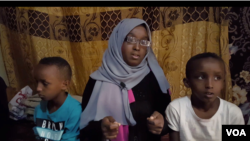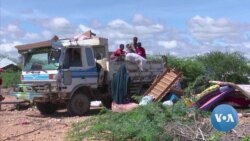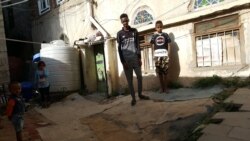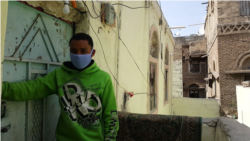“You just don’t get it,” one young man told me as I stepped over a pile of trash to enter 19-year-old Mohammed’s single room in the Yemeni capital, Sanaa. “People die in their homes here all the time.”
That was 10 years ago, and the young man, a Somali refugee, was frustrated because I was concerned with a single dying boy while the entire refugee community was barely surviving.
It was before the uprising in Yemen, before the war, before the humanitarian crisis and before the coronavirus pandemic. It was back when things were not as bad.
Now, there is almost no help left for refugees, and families say they would rather risk exposure to the coronavirus than starvation.
“If my mother stays home, she cannot feed us,” says Aayah Mohammed Osman, a teenage Somali refugee in Sanaa. “But if she goes to work [as a house cleaner], she also may bring home the virus.”
There are roughly 280,000 refugees from Africa living in Yemen. Most are from Somalia. And while many of them intended to transit through Yemen to Saudi Arabia or other wealthy countries, many also planned on staying.
Yemen is one of the world’s poorest countries, embroiled in a brutal war and plagued with acute malnutrition and diseases like cholera, malaria and dengue fever.
The number of refugees arriving on Yemen’s shores has dropped by about 80 percent since the pandemic began, but people are still coming and aid organizations say international resources to support them have dwindled to almost nothing.
“It says a lot about the state of the world, when people feel that Yemen is better than their own situation at home,” UNHCR representative in Yemen Jean-Nicolas Beuze said from his office in Sanaa.
Stigma
Back in 2010, when Mohammed was fighting for his life from his single, dirty room, his suffering was compounded by racism and fear. He had tuberculosis in his stomach and he was emaciated and ashen. Many people thought it was AIDS.
Several hospitals refused him, and his neighbors eventually got him kicked out of his room.
Nowadays, the hostility from some locals toward refugees has intensified, says Yaser Rashad Abdul-Mosa, an 18-year-old Somali who was born in Yemen. One of the first deaths from the virus was a Somali refugee found in a Sanaa hotel.
“People started saying that we brought the disease here,” says Abdul-Mosa, appearing close to tears. “They say, ‘Why did you come here?’ ”
Before the pandemic, he adds, racism was apparent, but not as hostile. “They called me, ‘Hey, blackie!’ ” he says.
“But now they say, ‘Hey, slave! You should wear a mask because you are infected with the virus.’ ”
Poverty
When a nearby charity organization discovered Mohammad living alone, unable to stand to go the bathroom, or usually to even sit up, they set up a system. Refugees learning English at the organization were already required to do community service to “pay” for classes.
Feeding, bathing or even checking in on Mohammad would count as service hours. He survived for a couple of weeks with their help.
But in 2020, there is no help. Many aid organizations have long since left Yemen and others are attending to one of Yemen’s many other ongoing emergencies. Besides refugees, 3.6 million people are internally displaced from Yemen’s five-year-old war and 80% of the population needs aid.
The country as a whole is often called the “world’s worst humanitarian crisis.”
And for everyone, including refugees, the pandemic has made things much worse.
“Life has never been harder than since the coronavirus crisis,” says Ali Mohammed Adam, a 32-year-old from Somalia who used to hand wash cars on the streets for a living. Now he has no work. “We need food and basic household items.”
Dwindling aid
A few weeks after students started checking in on Mohammed, his condition worsened. The head of the charity organization drove him to a hospital hours away and paid for food, treatment and someone to watch him.
Even then, many Yemeni hospitals were barren, and if a patient didn’t have someone to go out to buy medicine and food, they would go untreated and hungry. Since then, thousands of hospitals have been destroyed by the war.
Now the only major aid organization left serving refugees is the UNHCR and it has been cutting services, like cash assistance and emergency shelters. International funding is scarce, says Beuze, of the UNHCR, as the world’s economy reels from the pandemic.
Soon they may have to also lay off local staff and stop field visits for lack of protective gear, he adds.
“[Refugees] are really on the fringe of society,” Beuze says. “Without this support, they are left to resort to negative coping mechanisms.”
He means they will eat less, children will drop out of school and some may be forced into prostitution or child weddings.
On May 10, 2010, Mohammed died in that hospital after the people hired to watch him left without an explanation. Later that day, I got an email from the organization.
“I’m unsure at this point what was the real cause of his death,” read the note. “It’s disappointing to me that between all of our NGOs, we could not save this one person’s life.”
And this was before, when there was help, when things were not as bad.













